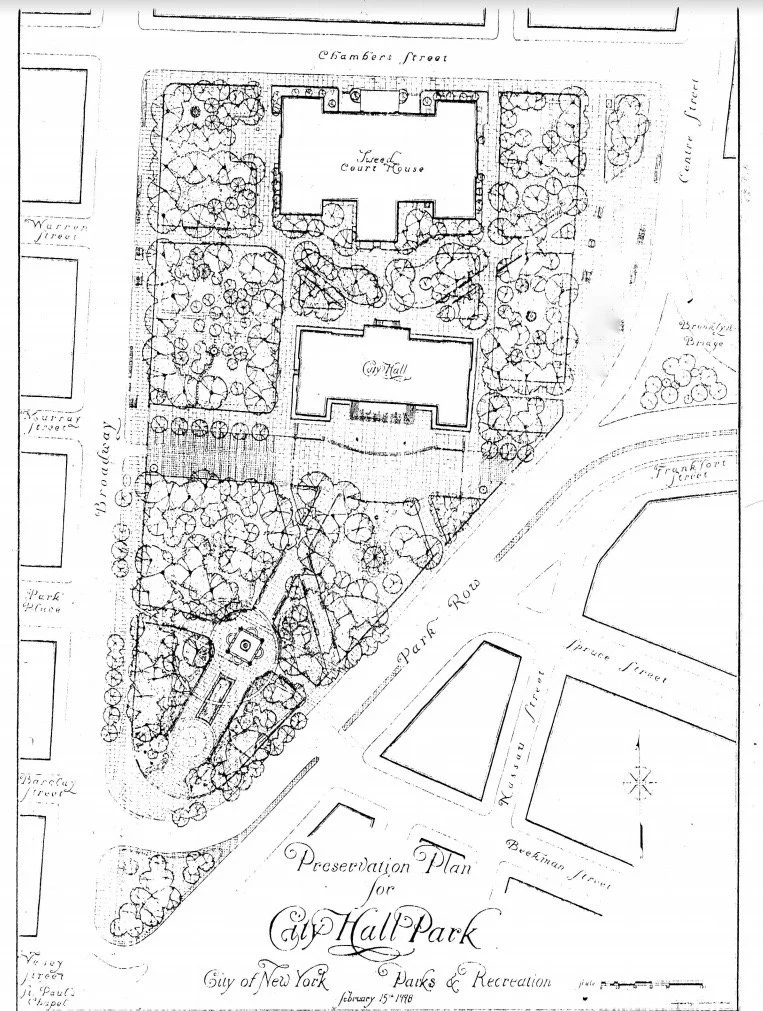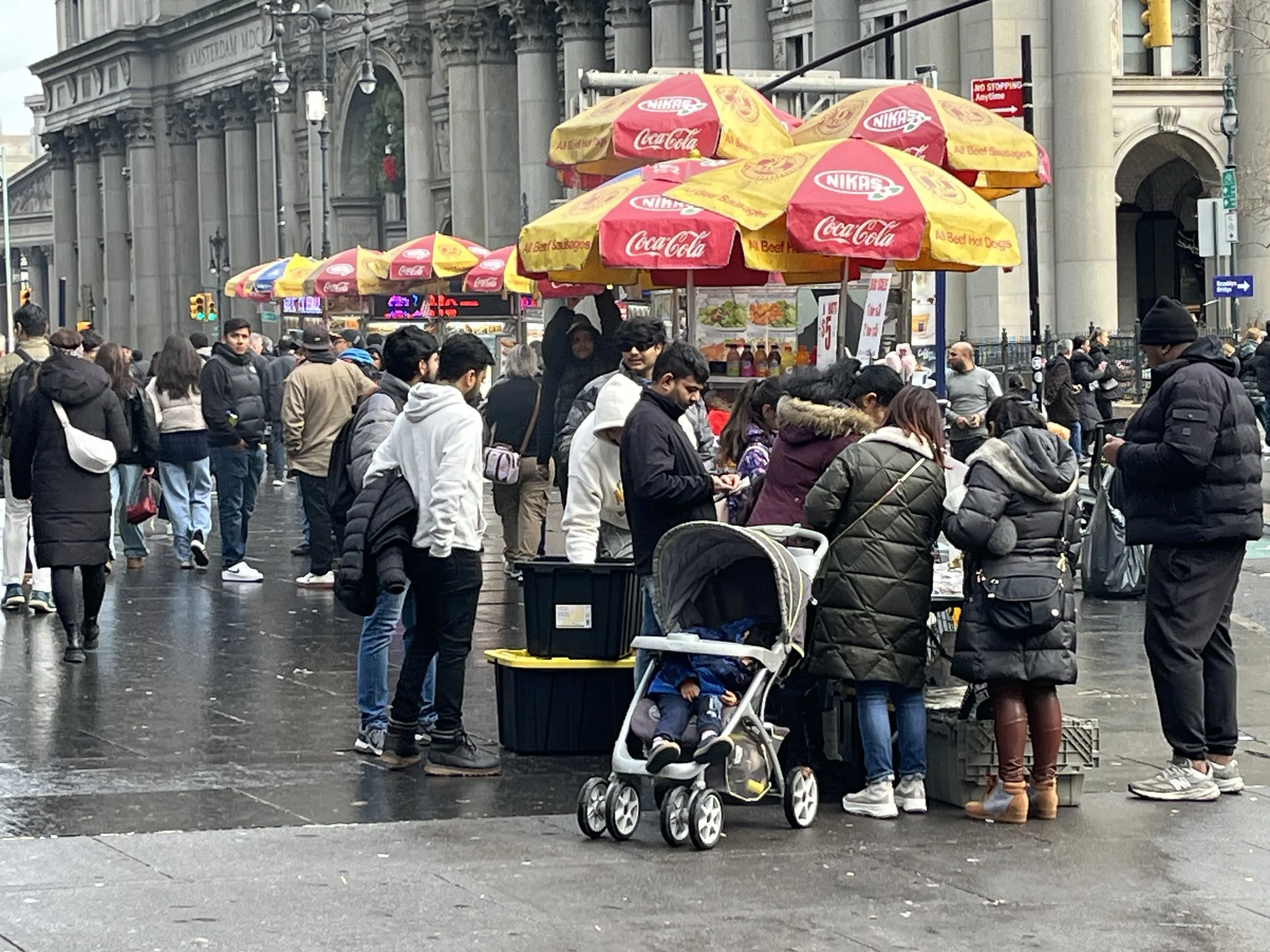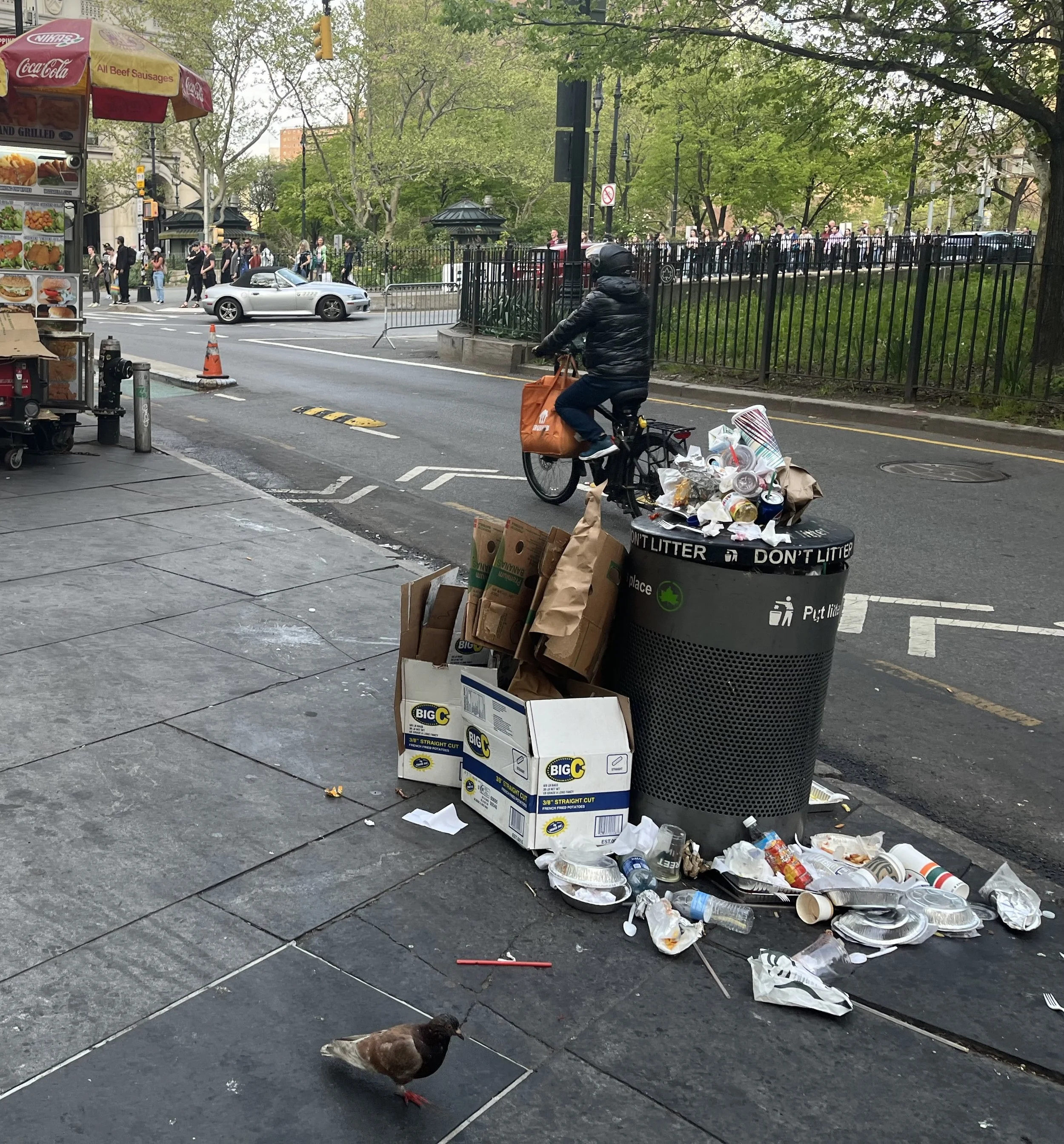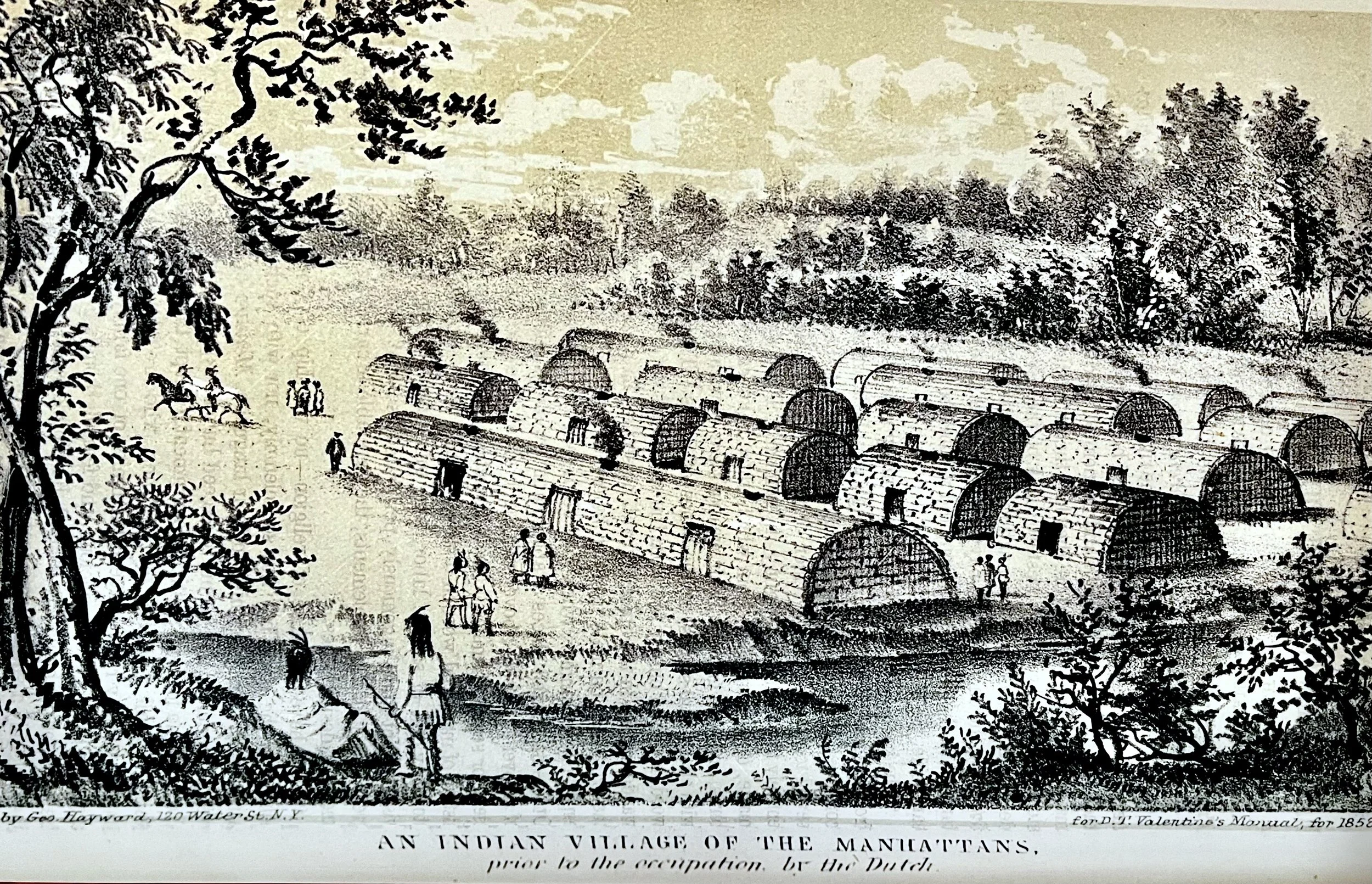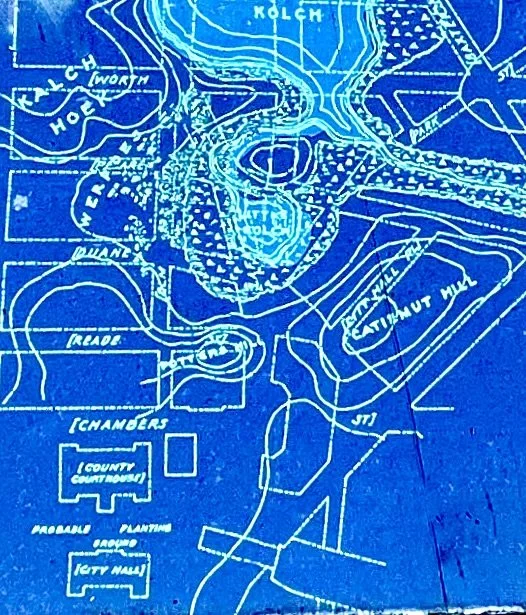City Hall Park Northeast Plaza Renovation
Introduction
~Lenapehoking Acknowledgement~
Friends of City Hall Park Proposal in consultation with Lenape Center 7/27/2025
FCHP with Lenape Center propose Northeast Plaza improvements to reclaim the NYC Parks space:
• for desperately-needed, safe, more-peaceful recreation open space for residents, workers, shoppers. tourists, and all who pass by in the center of densely developed lower Manhattan.
• for respectful surroundings for New York City’s Mayor and City Council, other elected officials, City Hall guests, and municipal staff in our civic center next to City Hall.
• for well-deserved recognition of Lenapehoking, in part to remedy omission in CHP history signage and for NYC to provide a central civic space to current Lenape people to welcome them back to their home.
City Hall Park is NYC Parks’ administrative and physical space from curb to curb on the City Hall Park block.
There are shared municipal uses and responsibilities of the majority public space by DOT, MTA, DSNY, FDNY, DCAS, DoE, NYPD 1st and 5th Precincts, NYPD Municipal Security Section Intelligence Bureau, the Mayor’s office, other city agencies, and sub-contracted service vendors, as well as by official City Hall visitors and media.
City Hall Park, Manhattan Community Board 1 and local elected officials’ districts in Lower Manhattan have been the homeland of the Lenape people for thousands of years.
For decades, City Hall Park’s Northeast Plaza, located in arguably the world’s most valuable real estate, has been an under-used open space, a very wide sidewalk, a remainder of the 2nd Avenue elevated train grand terminal (1878 - 1942) and now has become ripe for being a nuisance space.
In 2014 NYC Parks sold a permit to one food cart. Rapidly growing from there, particularly after the pandemic lockdown ended, the Brooklyn Bridge pedestrian walkway and the Northeast Plaza became choked with commercial vendors.
The NYC Parks public space became a congested, pedestrian-impeding, noisy, smoky, polluting, trash-spewing, unhealthy food court with souvenir sales tables that evacuated from the Brooklyn Bridge ban, all products available within a block. The de facto market grew to 9 permanent food carts 24/7, with more than 25 vendors’ carts and tables on nice days. The environmental intrusions of animal fat smoke, gas generator pollution and noise, several very loud simulataneous music sources, and littered food, paper and plastic cart waste that DSNY and NYC Parks clean up, plus blocking park amenities… continued all day and night even when there are no customers, no pedestrians at all on the plaza. (Please scroll down for photos).
Now that the NYPD First Precinct Quality of Life Unit has taken control to prevent unsafe, annoying, out-of-control encroachment on NYC Parks land, the plaza is in fact more vulnerable to potential incursion by speeding cars, whether intentional. as in many recent headlines, or accidental. A traffic fence along Centre Street is still called for. In addition, the proposed fence and sidewalk bollards would preclude future use by food carts. Please see Plan notes.
Werposes facing towards City Hall Park site “prior to the occupation by the Dutch.”
On this same land, the Lenape people lived here for thousands of years, long before the arrival of Dutch-sponsored explorer Henry Hudson in 1609, Dutch colonization beginning in 1624 and the 1625 New Amsterdam establishment.
Their homeland is culturally alive today to contemporary Lenape people, with Lenape Center’s office coincidently near CHP on Vesey Street. They are ancient geographic forebears for all of us in our neighborhood, our city and our region. Lower Manhattan, our civic center, was a centrally-located cross roads for the Lenape nation. From some perspectives, we all reside, work and play on Lenape land.
Lenapehoking, what the Lenape people call their historic region, translated as “Lenape homeland,” extends from the Hudson Valley to the Chesapeake Bay, with our civic center and CB1 near the center of Lenape territory.
Lenape families lived in a year-round village on a site that is now the open space of Federal Plaza, approximately from Worth Street to Reade Street. Werpoes was on the shores of a 6-acre, 60-foot-deep, spring-fed fresh-water pond, with walking trails approximately where Centre St, Park Row and Broadway are now situated.
At the very beginning of colonization, the Lenape co-existed cooperatively with early settlers in the New Amsterdam village and in the nearby forest, including engaging in trade with the profit-seeking Dutch West India Company.
The sale of Manhattan island by the Lenape to the Dutch, a transaction with no evidence, is a profound cultural misunderstanding that continues today. In the first 40 years of colonization, historical documents report the genocide of 90% of the Lenape Nation population, as well as clear-cutting their villages, growing fields and forest habitat, then forced removal of the surviving Lenape to distant reservations by the early U.S. government. Historically, albeit with unused, more peaceful alternatives to the same end, the devastating eradication of the Lenape people and culture from this land locally and regionally allowed the European colonists to first build the center of the city’s and nation’s democacy in this place.
The proposed Plaza renovation honors the First People, their contemporary descendants, and this central place that is important in their history, important in NYC’s local and regional history, and currently. important to contemporary Lenape people and others who are pleased to work to offer well-deserved Lenape Homeland acknowledgement in civic center.
It will specifically partially remedy omission in CHP’s NYC historical Time Wheel. It is a travesty that the NYC history written in stone in our civic center begins with the Dutch, ignoring the first people here, short of a reference to Broadway’s origins as a Lenape trail! Thousands of years of Lenape here preceding Dutch arrival determines that City Hall Park’s Time Wheel slice of the history of this place starting in 1625 would indeed be very, very narrow compared to the thousands of prior years of Lenape history.
Fair compensation for the long-ago massacring and forcibly-taken land is not within the realm of this proposal, but this proposed renovation is fitting for NYC’s civic center that centuries ago was a Lenape center, with the same earth underneath the pavement on which the Lenape walked.
This proposed Plaza renovation in our civic center provides a substantial, permanent, culturally-significant acknowledgement of the significance of Lenapehoking by Community Board 1, by our NYC, NYS and Federal governments officials, and by neighborhood residents and other Friends of City Hall Park. It contributes to achieving the rightful historic position of the Lenape Nation.
This project has potential to make a profoundly positive, enriching, lasting, direct impact on the contemporary Lenape people, which sustains and nurtures their community traditions and identity, on our neighborhood, and on many of the thousands who will pass through the Plaza daily!
With the proposed, easily-installed park amenities, added City Hall and safe pedestrian security, repaired bluestones and MTA glass bricks, and meaningful acknowledgement elements, the proposed renovation inexpensively and expediently restores the NYC Parks recreational property, creates a respectful civic center, and is a permanent civic remembrance of the First People.

